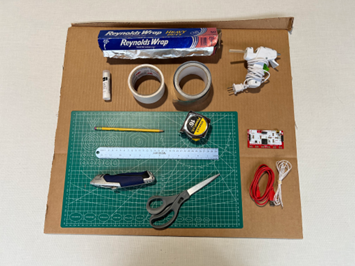Introduction
Switches are one of the most essential parts of any circuit. Electric switches are used to connect and break the flow of connectivity. They allow us to turn on and off electronics whenever we want. Switches can also divert the flow of electric current in a circuit. This important component is used in numerous fields such as homes, automobiles, industrial, aerospace, and so on.

Switches can also be applied to small circuit boards like the Makey Makey. By combining switches with the Makey Makey circuit, we can control the Makey Makey inputs in various ways. In this guide, I’ll show you an entire collection of aluminum foil switches to use in your Makey Makey circuits.
How do Makey Makey Switches Work?
All of the switches work in the same fundamental method. There are two aluminum foil connection points that are initially separated. Then, by rolling a ball, pressing a pressure plate, or spinning a needle, the two points have a complete connection that causes Makey Makey to send an input to the computer.

Materials
- Cardboard
- Aluminum Foil
- Glue Stick
- Duct Tape (preferably white and black)
- Aluminum Tape
- Hot Glue Gun
- Ruler/Measuring Tape
- Scissors/Utility Knife

Seesaw Switch
This Makey Makey switch is a seesaw that rotates back and forth to form and break the circuit connection. A weight can be added to the non-aluminum foil side to prevent a connection from occurring. Alternatively, a weight can be added to the other side to maintain a connection. When the aluminum foil side of the seesaw touches the aluminum foil on the board, the circuit is complete and the Makey Makey inputs a value to the computer.

Cylinder Switch
This Makey Makey switch utilizes a cylinder and ball to create the aluminum foil connections between the sides of the cylinder and the bottom of the board. When the aluminum foil ball is in the middle of the cylinder, the circuit connection is incomplete. When the ball touches the sides, it connected the walls to the bottom of the board.

Spin Switch
For this spin switch, the circuit becomes activated when the aluminum bit on the wooden needle touches the aluminum sheet on the cardboard sheet. The needle spins along the center axis. It can be left on parts without aluminum foil, or it can reach the part with the aluminum foil to complete the Makey Makey circuit. When the circuit is complete and the Makey Makey is activated, it will send an input to the computer.

Pendulum Switch
The pendulum switch works by swinging back and forth along a pole and completing the circuit when the aluminum foil ball touches the aluminum flap on the cardboard base. The ball will continue to swing back and forth until it reaches a stop. When the ball is swinging in the air the Makey Makey is not activated, but once it reaches the bottom it activates the Makey Makey.

Tilt Switch
The tilt switch has a small tunnel that holds an aluminum ball. When the switch is tilted in one direction, it reaches the end of the tunnel without aluminum foil, preventing the circuit from being completed. When tilted to the side with the aluminum foil, the aluminum ball connected the two flaps on aluminum, completing the circuit connection and activating the Makey Makey.

Knife Switch
The knife switch has two pillars that stand separate from each other. When the knife (cardboard hand) is set upright, the two pillars are disconnected and the Makey Makey is inactive. When the knife is set down (as shown in the image), the connection is complete and the Makey Makey is activated.

2 Clip Switch
The two clip switch uses two binder clips to create a switch to activate and deactivate the Makey Makey. When the metal parts of the binder clips are not touching, the circuit is incomplete and the Makey Makey is not activated. However, when the binder clips are flipped outwards and touch one another, the connection is made and the Makey Makey is activated.

Pressure Plate Switch
The pressure plate switch uses a compression force to create a complete connection in the circuit. When not pressed downward, the aluminum foil sheets are separated (there is a foam piece in between the cardboard pieces). However, when compressed, the aluminum foil sheets touch one another, which completes the circuit and activates the Makey Makey. When released again, the foam returns to its original shape and the two sheets are separated once again.

Project Examples
Have a solution to this challenge you want to share? Take a photo or video of your prototype, post it on social media, and don’t forget to tag us @fluxspace_io




